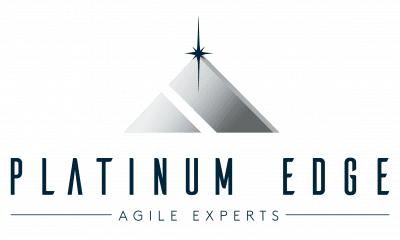
We at Platinum Edge have created this first Platinum Principle to help illustrate that the most successful agile project teams are those that practice spontaneity and creativity as opposed to formality. You can resist formality on your agile projects by rooting out and eliminating it wherever possible. Always look for ways to make processes less formal and more efficient. For example, instead of waiting until a scheduled meeting to discuss simple issues that could be resolved in seconds, walk over to a team member and ask questions to help resolve these issues. By doing this you eliminate the mobilization and demobilization required when attending a formal meeting.
In an agile system, ensure that discussions and the physical work environment are open and free-flowing. Keep documentation to the lowest level of quantity and complexity such that it contributes value to the project instead of hampering it. Avoid well-decorated presentations that contain more “fluff” than substance. Professional, honest, straight-to-the-point communications are best for the team and the project, and the entire environment has to make that openness available and comfortable.
There are many great reasons for minimizing formality on an agile project, including:
- The processes and requirements of formalization can often be complex and expensive – and don’t always contribute to creating a better product.
- You are able to reinforce the agile principle of simplicity – maximizing the amount of work not done.
- Your project team will have more time to concentrate on the work that is done, ensuring that the product is delivered to the customer’s satisfaction as quickly and efficiently as possible.
Ask yourself and your team members the following questions to help prevent the blind acceptance of formality in terms of existing practices:
- Are we using unnecessary and flashy displays that don’t support the product vision?
- Is there an easier way to get what we need?
- Do the current activities support the development of a quality product as quickly as possible?
Strategies for success in resisting formality include the following:
- Reducing organizational hierarchy whenever possible by eliminating titles within the project team
- Avoiding aesthetic investments such as elaborate presentations or extensive meeting minute forms
- Identifying and educating stakeholders who may request complicated displays of work on the cost of such displays
A high level of formalization is not required on an agile project and is quite often counter-productive. By rooting out and eliminating formality on your agile projects you will ensure that your project team is spending more time concentrating on activities that support customer value.

